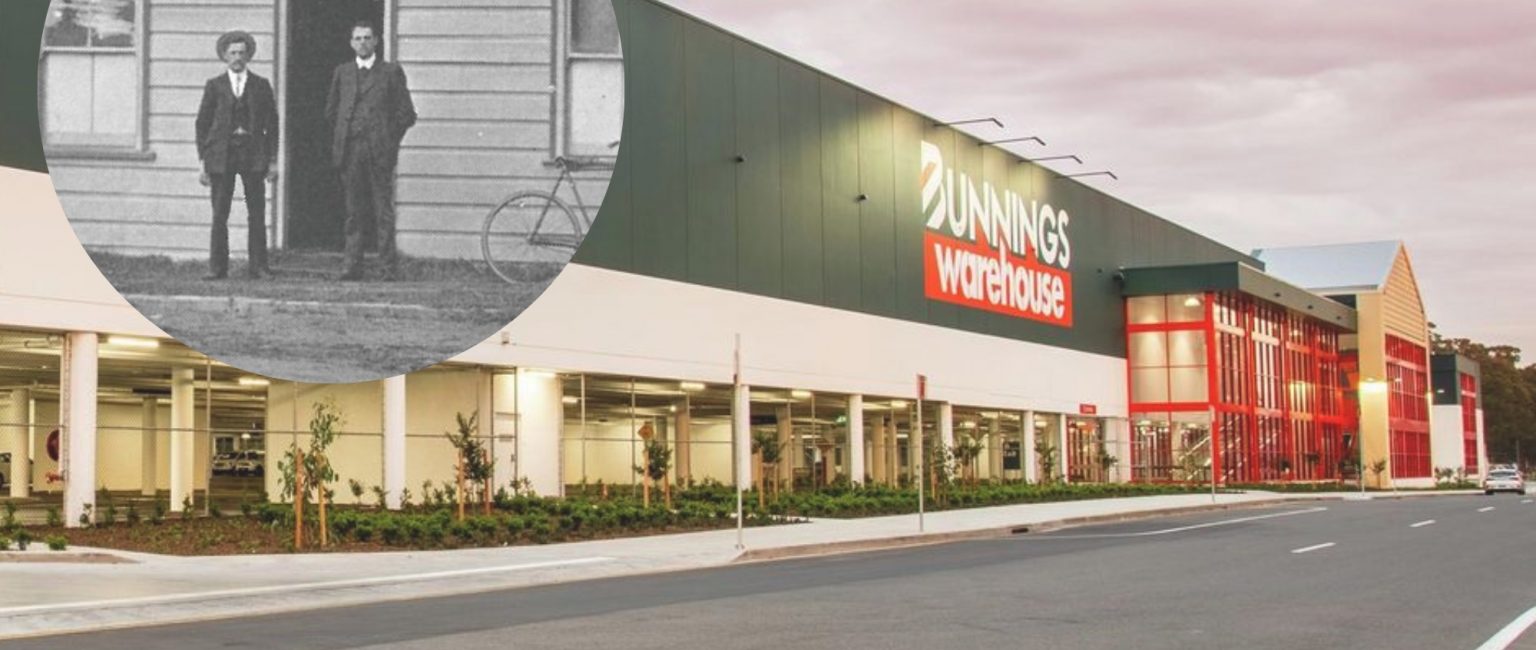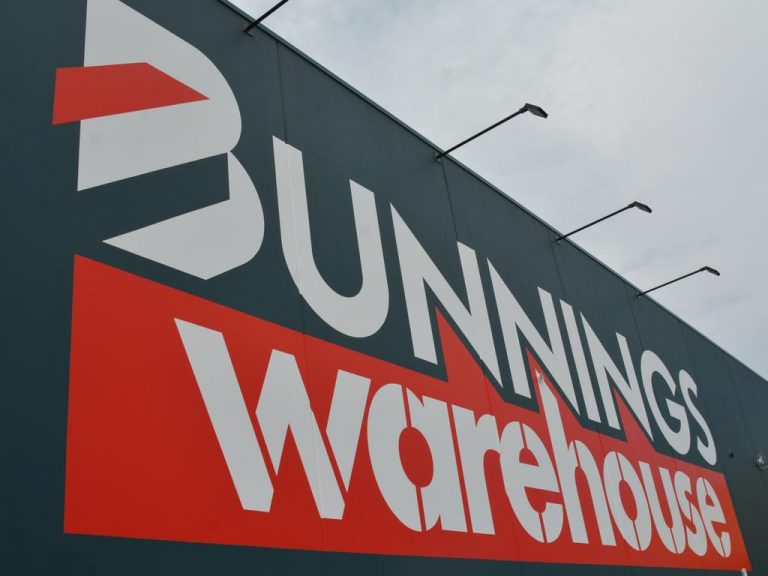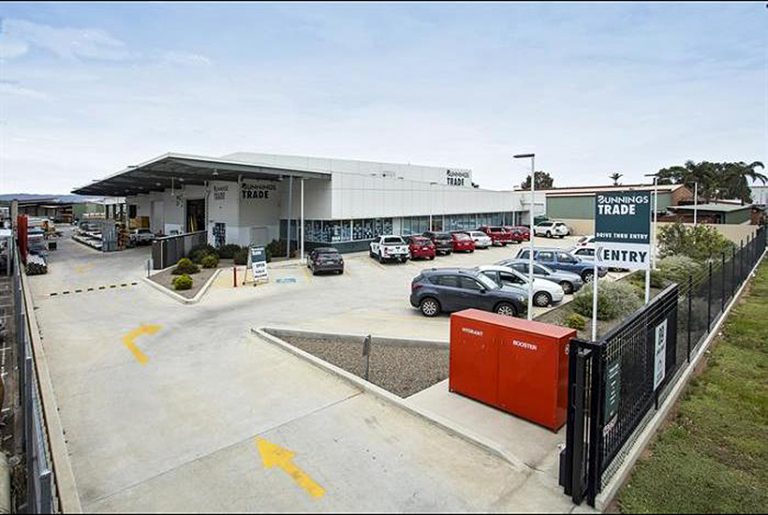The inside story of how Bunnings became a multi-billion-dollar household name

From its beloved sausage sizzle at the front door to the soaring shelves inside filled with just about everything you could ever want, Bunnings is an iconic Aussie institution.
But the story of the green giant begins more than a century ago, in a time long before weekend sausage sizzles, when two brothers sought their fortunes on the other side of the world.
In the winter of 1886, Arthur and Robert Bunning, tradesmen from East London, stepped off a passenger ship in Fremantle, Western Australia.
They quickly found work in the building trade, constructing the new wings of a lunatic asylum and a hospital, and were soon successful enough to open their first sawmill.
In the 1890s, as Western Australia thrived amid the gold boom, so did the industrious brothers, who hawked timber, bricks and other building supplies.
Bunning Bros Limited was officially incorporated in 1907, and ownership of the business was passed down to elder brother Robert Bunning’s three sons upon his death in 1936.
Not even the shadow of World War II could dim Bunnings’ shine.
After a brief pivot to shipbuilding for the Allies, the business rode the post-war housing boom to even greater heights, becoming a publicly listed company in 1952 and a key supplier for hundreds of thousands of homes.

The Bunning brothers arrived in Australia in 1886. Picture: Bunnings.
With its newly expanded consumer base, Bunnings launched its own hardware stores across the country, with the first opening in Perth in 1961.
A series of acquisitions and mergers with other hardware retailers in the 1970s, 80s and 90s saw it dominate DIY and hardware nationwide, culminating in its expansion to the east coast in 1993.
It was purchased by mega-conglomerate Wesfarmers in 1994.
Why it’s such a beloved brand
The secret to how Bunnings cornered the market is its ability to innovate, said the company’s managing director Mike Schneider.
“Our focus is on our customers, and we are constantly listening to them to identify opportunities to innovate and evolve our offer to meet their needs,” Mr Schneider told realcommercial.com.au.
“This isn’t just with the products we sell, but also the services we provide and experiences we create both in store and online.”
‘Anything you need, anytime at all’ was Bunnings’ slogan in the early 1990s, encapsulating its status as a one stop shop for the nation’s DIY needs.
Though the business’s tagline has changed, that remains true today, Mr Schneider said.

Wesfarmers acquired Bunnings in the mid-1990s and a rapid expansion began. Picture: Bunnings
“At a broader level, our overall strategy is underpinned by our three key pillars of providing customers the lowest prices, widest range and best experience,” he said.
“When customers visit our stores, we want them to have access to everything they need.
“The home, lifestyle and DIY market is expansive and really competitive. This competition drives us to ensure our offering remains appealing and relevant to the communities we serve, and something we think is really healthy.”
Another successful pivot
In 2020 and 2021, as the Covid-19 pandemic smashed the retail industry, Bunnings once again adapted, launching a click and collect service nationwide and – at long last – an e-commerce platform.
The digital makeover paid off.
As locked-down Aussies turned to home improvement projects to keep busy, Bunnings raked in whopping earnings before tax – $1.85 billion in the 2020 fiscal year and more than $2 billion in 2021.

When Bunnings wasn’t able to open its physical stores in the Covid era, it moved swiftly to a click and collect model. Picture: Getty
And if Australians knew they could turn to Bunnings in a time of crisis, that’s because the “core” of the business has long involved “supporting the community,” Mr Schneider said.
“Many of our team members live, work and raise families in these communities, so it’s really important that we’re active and engaged in all the regions we operate, which I think resonates with a lot of our customers.”
In the last financial year, Bunnings supported more than 54,000 local community activities, helping to raise over $29 million for a variety of causes.
Unsurprisingly, a Roy Morgan poll in 2022 found Bunnings to be the nation’s third most-trusted brand after supermarket giants Woolworths and Coles.

There are now hundreds of Bunnings stores across the country. Picture: Bunnings
But the same sadly cannot be said for some of Bunnings’ overseas markets.
Not all roses
In 2018, Bunnings exited the United Kingdom and Ireland after a disastrous attempt to bring the chain to the homeland of the business’s founders, resulting in a $1.3 billion write-down.
Blame for the failure was ascribed to everything from Brexit to selling the wrong type of barbeques, but observers generally agreed that Bunnings simply failed to understand the unique UK market and generate the same goodwill among Brits that it enjoys Down Under.
In the end, the British operation was sold for just one pound, and the ignominious interlude in Bunnings’ otherwise spotless record served as an important lesson.
“We haven’t always got it right, and we know there are always opportunities to improve, which is why we never stop listening to and learning from our customers,” Mr Schneider said.
What’s next?
Back on home turf, the big red hammer is seemingly unstoppable.
In 2022, Bunnings was named Australia’s strongest brand in an analysis by Brand Finance Australia, based on criteria including familiarity, loyalty, and corporate reputation.

The Bunnings sausage sizzle is just as iconic as the brand itself. Picture: Armidale Men’s Shed
Today, there are hundreds of Bunnings stores across Australia, from its flagship warehouses to smaller stores, in capital cities and small towns.
Bunnings retains an army of green-aproned workers – more than 50,000 staff – making it one of the nation’s largest private employers.
Bunnings’ “friendly and knowledgeable” staff are its “greatest asset,” Mr Schneider said.
“We know that excellent customer service begins with a passionate and committed team, and we’re really proud of the way our entire workforce is always fostering a trusting and direct connection with the communities we serve.”
With a newly opened warehouse in Caboolture, replacement stores in Kempsey and Hervey Bay, and a massive new warehouse under construction in Melbourne’s north, Bunnings is showing no signs of slowing down in 2023.
The rollout of its new pet range is the business’s largest category expansion in 20 years, with close to 1000 new products, including pet food and bedding, hitting shelves.

Bunnings consistently ranks as one of Australia’s most-trusted and most-valued brands. Picture: Bunnings
Another milestone is the expansion of its Beaumont Tiles outlets – the tile retailer was purchased by the company in 2021 in yet another acquisition – into WA.
“We’ve also been really open about our ambitions to grow the commercial side of our business and build deeper connections with our trade customers,” Mr Schneider said.
“Central to this growth is driving our whole-of-build strategy, by being able to support our customers through every stage of their commercial build. We’re continuously improving the in-store experience via our new-format trade desk and development of our commercial range including landscaping, workwear, tools and timber.”
No matter how big the business gets though, Bunnings’ approach remains unchanged, he said.
“It’s all about doing the little things right, doing them well, and doing them consistently, which our customers seem to respond well to.”







